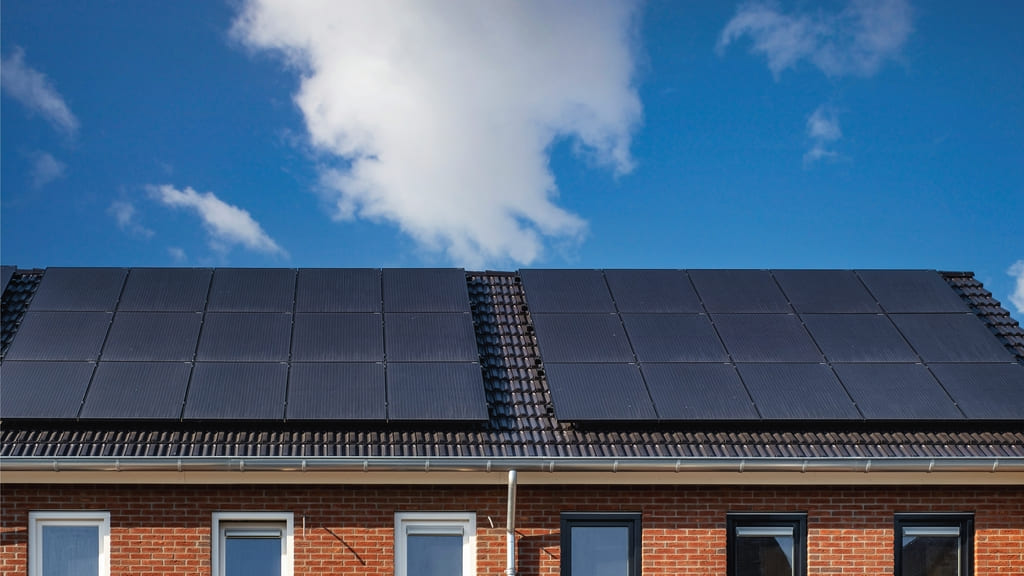The Pentagon’s recent decision to embrace solar energy marks a momentous shift toward sustainability and clean energy initiatives. With a focus on aligning with President Biden’s ambitious clean energy push, the Pentagon’s move is not only significant in its own right but also holds broader implications for the future of clean energy.
This article delves into the motivations driving the Pentagon’s transition to solar energy, the environmental and economic benefits of solar power, and the specific steps being taken to integrate solar technology into the Pentagon’s operations. We will explore how the Pentagon’s solar initiative aligns with President Biden’s clean energy goals and the potential impact it could have on reducing carbon emissions, job creation, and cost savings.
As the world looks toward a more sustainable future, the Pentagon’s embrace of solar power serves as a powerful example of the potential for clean energy to transform our world.
Key Takeaways:
- The Pentagon’s move to go solar is aligned with Biden’s clean energy push.
- The installation of solar panels and implementation of energy efficiency measures will help reduce carbon emissions and save money.
- This initiative also creates job opportunities and paves the way for a cleaner and more sustainable future for clean energy.
Why Is the Pentagon Going Solar?
The Pentagon is embracing solar energy as a strategic initiative to align with the clean energy push by the Biden administration and reduce its environmental footprint.
This decision reflects the growing emphasis on renewable energy sources and sustainable practices within the U.S. government. The shift towards solar energy signifies a broader commitment to combatting climate change, with the Energy Department and Energy Secretary Jennifer Granholm playing pivotal roles in integrating renewable energy into national security strategies. By utilizing the strength of solar panels, the Pentagon aims to not only reduce its reliance on traditional energy sources but also set an example for other government agencies and private entities seeking to embrace sustainability.
What Are the Benefits of Solar Energy?
Solar energy offers a range of benefits, including reduced reliance on traditional energy sources, lower carbon emissions, and potential cost savings through grants and incentives.
The environmental advantages of solar energy are significant, as it contributes to reducing greenhouse gas emissions and mitigating climate change. By utilizing the strength of the sun, solar energy systems help in conserving natural resources and minimizing pollution.
The economic benefits cannot be overlooked, as households, businesses, and communities can benefit from reduced electricity bills and increased energy independence.
What Are the Environmental Impacts of Solar Energy?
Solar energy contributes to environmental sustainability by promoting carbon-free electricity generation, enhancing energy resilience, and supporting the goal of achieving net-zero emissions, backed by insights from atmospheric science.
As the world grapples with the pressing need to mitigate climate change, solar energy emerges as an essential solution that aligns with the broader objectives of reducing carbon emissions. By utilizing the strength of sunlight, solar panels convert energy from an abundant and renewable source into electricity, thereby reducing reliance on fossil fuels. This transition towards solar power not only lowers greenhouse gas emissions but also fosters energy independence, offering a pathway towards a cleaner and more sustainable energy future.
What Are the Steps the Pentagon Is Taking to Go Solar?
The Pentagon is implementing a series of strategic measures to adopt solar energy, including the installation of solar panels and the implementation of energy efficiency upgrades across its facilities.
These initiatives align with the Department of Defense’s commitment to clean energy and sustainable practices. The installation of solar panels on the Pentagon’s roofs and open spaces will significantly contribute to its overall shift towards renewable energy sources.
The integration of energy-efficient technologies within its infrastructure aims to reduce energy consumption and carbon emissions.
Installing Solar Panels
The installation of solar panels at the Pentagon is a key initiative aimed at harnessing renewable energy sources and aligning with the objectives outlined in the AFFECT program.
As part of the efforts to promote clean energy and reduce the environmental footprint, the Pentagon has embarked on a significant project to integrate solar panels into its infrastructure. The AFFECT program has been instrumental in facilitating this transition towards more sustainable energy practices. By opting for solar energy, the Pentagon showcases its commitment to contributing to the federal government’s goal of boosting renewable energy usage.
Implementing Energy Efficiency Measures
The Pentagon is enhancing its energy efficiency by implementing a range of measures to reduce energy consumption and optimize its facilities through targeted efficiency upgrades, in collaboration with the Energy Department.
These efforts include retrofitting older buildings with energy-efficient technologies, such as LED lighting and smart HVAC systems, as well as leveraging advanced building management systems to monitor and adjust energy use in real-time. The Energy Department has been instrumental in providing technical expertise and financial support for these initiatives, aligning with the government’s commitment to clean energy and sustainable practices.
The Pentagon has developed specific energy conservation programs, setting ambitious goals to reduce its overall energy consumption and enhance operational efficiency across its vast infrastructure. Through these concerted efforts, the Pentagon aims to serve as a model for energy efficiency within the government sector.”
Partnering with Solar Companies
The Pentagon is forging partnerships with leading solar companies to facilitate solar development on public lands, in line with the objectives outlined in the Western Solar Plan and the federal government’s clean energy agenda.
This collaboration aims to leverage the expertise and resources of both the military and the solar industry to accelerate the deployment of clean energy solutions. By harnessing the vast potential of public lands for solar projects, the partnership could significantly contribute to meeting the ambitious renewable energy targets set by the government.
The integration of renewable energy initiatives into national security strategies reflects the growing importance of sustainable energy sources in safeguarding the nation’s interests and fostering environmental stewardship. This strategic alliance exemplifies the commitment to advancing renewable energy solutions while identifying synergies between national security and clean energy development.
What Is Biden’s Clean Energy Push?
President Biden’s clean energy push is focused on promoting renewable energy sources, achieving net-zero emissions, and implementing federal initiatives to advance the adoption of clean energy technologies.
To achieve these goals, the administration has unveiled ambitious plans to invest in renewable infrastructure and incentivize the transition away from fossil fuels. A key aspect of the strategy involves enhancing the availability and affordability of clean energy sources such as solar, wind, and hydroelectric power. The government aims to leverage its purchasing power to procure renewable energy and bolster energy-efficient technologies in federal buildings.
By prioritizing clean energy innovation and sustainability, President Biden seeks to position the U.S. as a global leader in the fight against climate change.
What Are the Goals of Biden’s Clean Energy Push?
Biden’s clean energy push aims to enhance climate resiliency, promote the use of clean energy through grants, and leverage the expertise of the Energy Department to drive innovation and adoption of sustainable energy solutions.
President Biden’s initiative emphasizes the urgency of addressing climate change and reducing greenhouse gas emissions. The focus is not only on advancing renewable energy sources, but also on building infrastructure that can withstand the impacts of a changing climate. Through grants and funding, the administration aims to accelerate research and development in clean energy technologies and support the deployment of climate-resilient solutions.
The Energy Department plays a pivotal role in this strategy, collaborating with industry leaders, research institutions, and other government agencies to propel innovation in areas such as energy storage, grid modernization, and carbon capture technologies. By fostering partnerships and providing technical assistance, the department aims to facilitate the integration of renewable energy resources into the nation’s energy infrastructure.
How Does the Pentagon’s Move Align with Biden’s Clean Energy Push?
The Pentagon’s transition to solar energy aligns with President Biden’s clean energy push by contributing to the reduction of carbon emissions, promoting renewable energy adoption, and demonstrating the federal government’s commitment to sustainable energy practices.
President Biden’s strong emphasis on clean energy aligns with the Pentagon’s solar initiative, indicating a unified commitment to reducing carbon emissions and promoting renewable and sustainable energy solutions.
The integration of solar energy within the Pentagon not only showcases a dedication to environmental sustainability but also serves as a model for other governmental agencies to follow suit, ensuring a broader adoption of clean energy practices across the federal sector.
What Impact Will the Pentagon’s Solar Initiative Have?
The Pentagon’s solar initiative is poised to deliver significant impacts, including reductions in greenhouse gas emissions, job creation, and demonstrating the federal government’s commitment to clean energy leadership.
This initiative aligns with federal programs aimed at promoting renewable energy sources across governmental operations. By incorporating solar power into its infrastructure, the Pentagon sets a stirring example for other government entities and private enterprises to follow suit.
The widespread adoption of solar energy within the defense sector can further accelerate the industry’s advancements, paving the way for enhanced technology and reduced dependency on traditional fuel sources.
Reducing Carbon Emissions
The deployment of solar panels at the Pentagon contributes to the reduction of carbon emissions, aligning with the broader goal of achieving net-zero emissions and enhancing the institution’s climate resiliency.
The integration of clean energy sources like solar energy plays a pivotal role in mitigating the environmental impact of the Defense Department’s operations. By utilizing the strength of solar panels, the Pentagon exemplifies a commitment to transitioning toward sustainable energy practices while reducing its carbon footprint.
The emphasis on environmental sustainability through the adoption of solar technology serves as a significant step in effectively addressing climate change challenges. As the Pentagon sets an example in utilizing renewable energy, it motivates other institutions and industries to embrace similar initiatives, thereby contributing to the global efforts in combatting the adverse effects of climate change.
Creating Jobs
The Pentagon’s embrace of solar energy is expected to spur job creation within the renewable energy sector, contributing to economic growth and supporting the expansion of sustainable energy employment opportunities.
This move comes in the wake of growing awareness about clean energy and its numerous benefits. The demand for solar energy installations and maintenance is on the rise, and as a result, job prospects in this sector are expected to multiply.
The Pentagon’s commitment to solar energy not only showcases potential for curbing carbon emissions but also indicates a positive shift towards a greener, more employment-rich future. It is poised to create a ripple effect, opening up avenues for employment in manufacturing, installation, and maintenance of solar infrastructure, thereby boosting economic growth and driving the renewable energy workforce forward.
Saving Money
The Pentagon’s adoption of solar panels and energy efficiency measures is anticipated to yield significant cost savings, aligning with the federal government’s commitment to prudent fiscal management and sustainable operational practices.
By utilizing the strength of solar energy, the Department of Defense intends to reduce its reliance on traditional fossil fuels, resulting in long-term financial benefits. Implementing energy-efficient technologies across its infrastructure, such as lighting and HVAC systems, is projected to further reduce operational expenses.
These initiatives not only demonstrate the Pentagon’s proactive approach to clean energy but also underscore its dedication to optimizing federal budgets and minimizing its environmental footprint.
What Does This Mean for the Future of Clean Energy?
The Pentagon’s move towards solar energy signals a significant step towards a future powered by clean and renewable energy, in alignment with the Biden administration’s commitment to enhancing climate resiliency and promoting sustainable energy practices.
This transition not only demonstrates the Department of Defense’s dedication to reducing its carbon footprint and environmental impact, but also sets a powerful example for other governmental and non-governmental entities to follow suit.
Embracing solar energy has the potential to create a substantial positive impact on the environment, economy, and national security. By investing in sustainable initiatives, the Pentagon is contributing to the broader global effort to mitigate climate change and build a more sustainable future.
Frequently Asked Questions
What is the significance of The Pentagon going solar?
The Pentagon, which is the largest office building in the world and the headquarters of the United States Department of Defense, switching to solar power is a significant step towards achieving clean and renewable energy goals.
Why is this news important?
This news is important because it aligns with President Biden’s clean energy push and demonstrates the government’s commitment to reducing carbon emissions and transitioning to cleaner energy sources.
How much energy will be generated from the solar panels at The Pentagon?
The solar panels installed at The Pentagon are expected to generate 20 megawatts of energy, which is enough to power about 4,000 homes for a year. This will significantly reduce the building’s reliance on non-renewable energy sources.
Will this project save money for the government?
Yes, the solar panels are expected to save the government approximately $2.8 million in energy costs per year. This will not only benefit the environment but also save taxpayer money in the long run.
Is The Pentagon the only government building going solar?
No, The Pentagon is not the only government building going solar. The Biden administration has set a goal to power all federal buildings with renewable energy by 2025, and many other government buildings have already started implementing solar energy projects.
How does this switch to solar affect national security?
By reducing the military’s reliance on non-renewable energy sources, this move towards solar power strengthens national security by decreasing the need for foreign oil imports and making the military more self-sufficient in terms of energy production.



